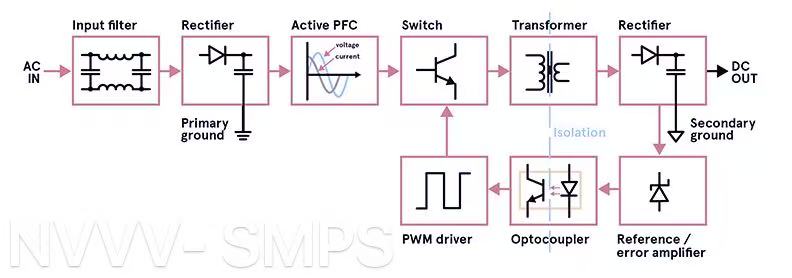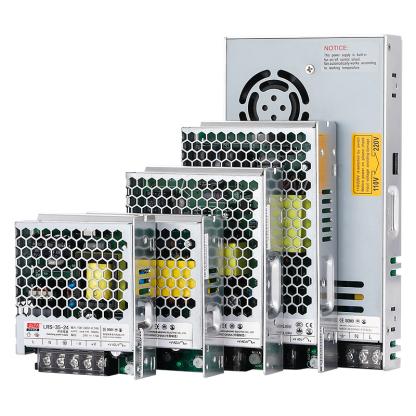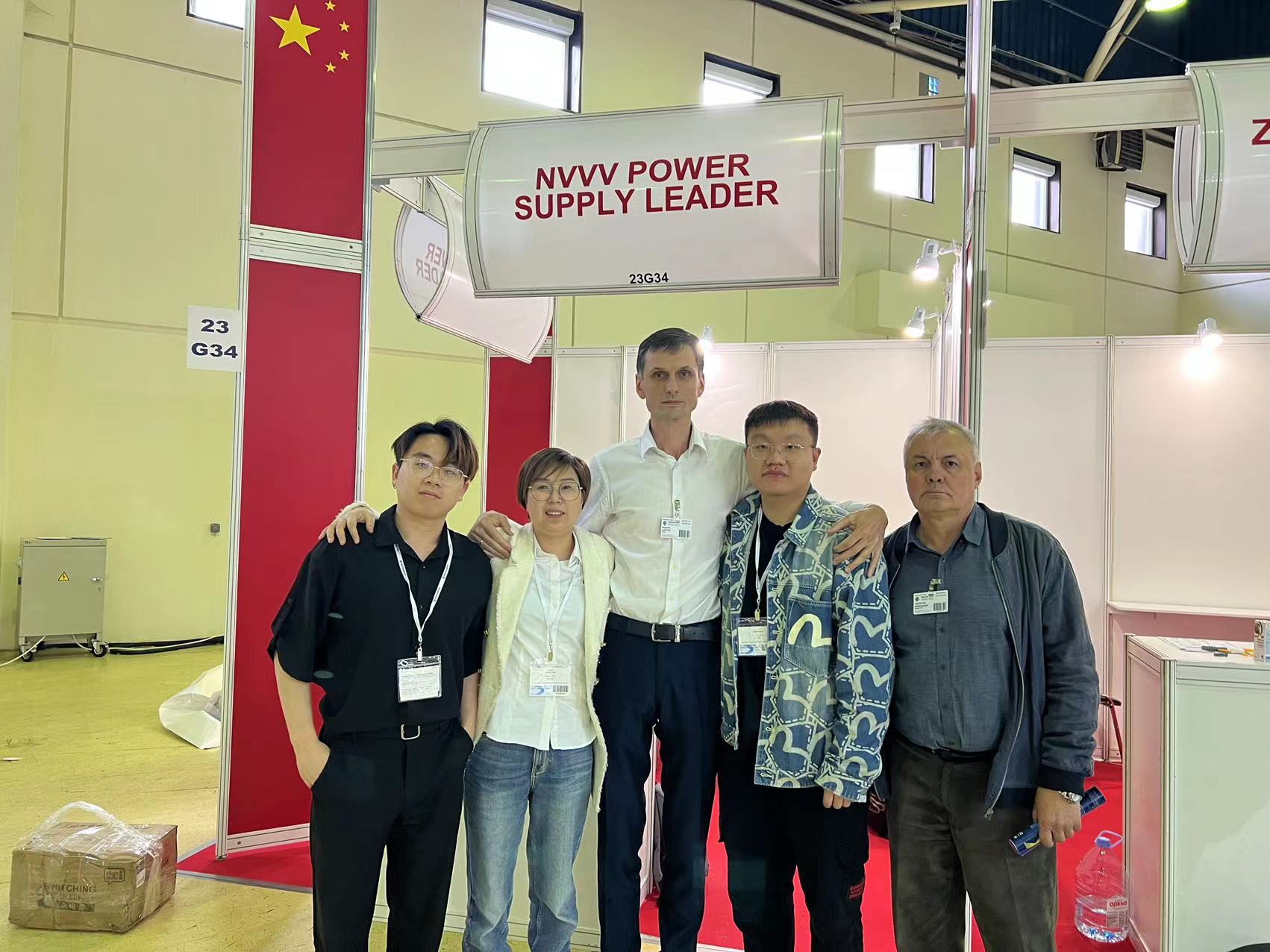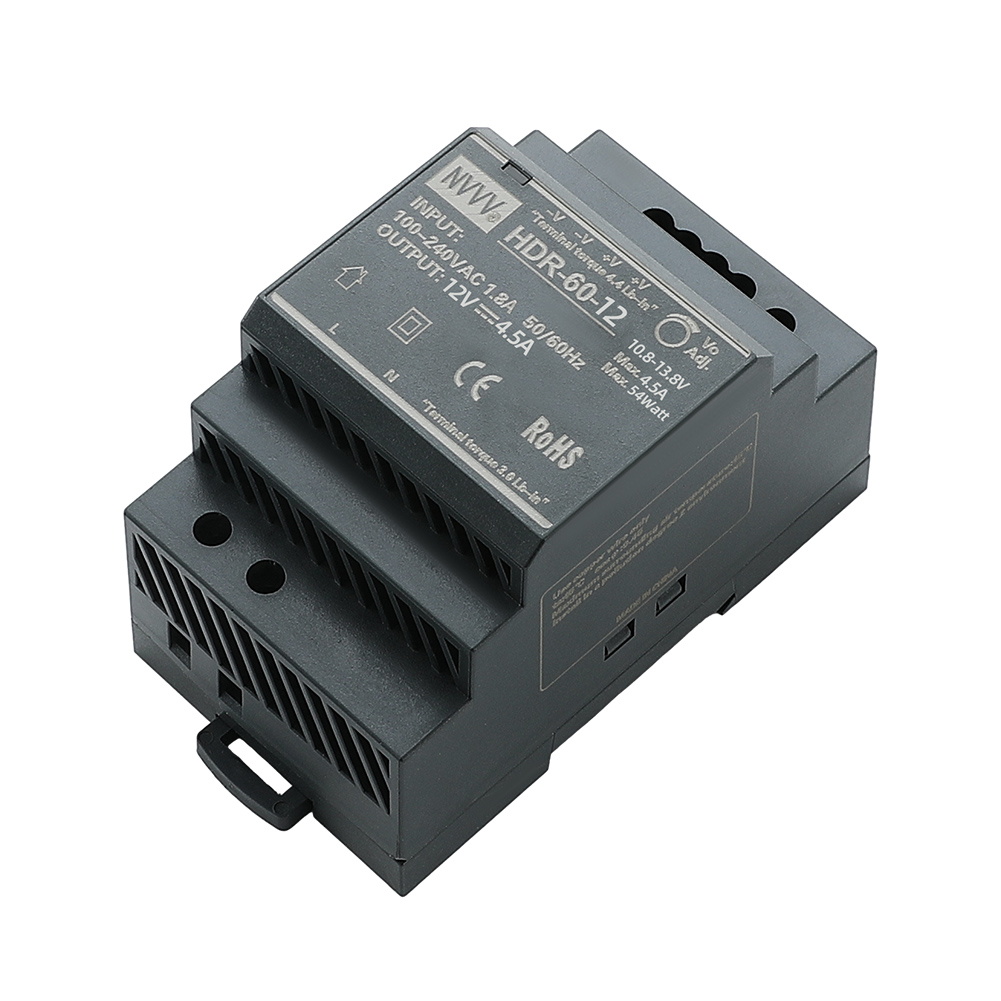5 Benefits of Using a Switching Mode Power Supply in Building Power
In modern intelligent building systems, power efficiency, stability, and reliability are critical. Whether it’s security monitoring, building automation, data center power management, or property management systems, an efficient power supply ensures uninterrupted operations.
A Switching Mode Power Supply (SMPS) has become the preferred choice for powering building infrastructure due to its high efficiency, compact design, and reliability. Compared to traditional linear power supplies, SMPS offers better energy savings, voltage stability, and longer lifespan, making it ideal for complex building systems.
In this article, we will explore five key benefits of using an SMPS in building power systems and how it enhances efficiency across various intelligent building applications.
Table of Contents
- SMPS Increases Energy Efficiency & Reduces Power Costs
- Compact & Lightweight SMPS Design Optimizes Space in Buildings
- Wide Input Voltage Range Ensures Stability in Building Power
- SMPS Offers High Durability & Long Lifespan
- Advanced Protection Features Improve Building Power Safety
- Why NVVV is a Trusted Provider of Industrial Switching Mode Power Supplies?
1. SMPS Increases Energy Efficiency & Reduces Power Costs
Energy efficiency is a top priority in building power systems, where multiple devices run continuously. From computer network systems to security monitoring and automation, energy consumption is significant. A Switching Power Supply (SMPS) provides a high-efficiency power conversion, reducing energy waste and operational costs.
Why Energy Efficiency Matters in Building Power Systems?
- Lower Electricity Bills: SMPS operates with efficiency levels of 80% to 95%, while traditional linear power supplies only achieve 40% to 60% efficiency. The higher efficiency means less wasted energy, directly reducing electricity expenses.
- Reduced Heat Generation: Inefficient power supplies produce excess heat, increasing the cooling requirements of data centers, network rooms, and control systems. SMPS generates less heat, minimizing the need for additional cooling and extending equipment lifespan.
- Sustainable & Green Energy Compliance: Many modern buildings aim for green certifications, such as LEED or energy-efficient building standards. Using SMPS helps meet energy-saving goals and reduces carbon footprint.
Real-World Example: Data Center Energy Optimization
A data center running thousands of servers, routers, and switches switched from traditional linear power supplies to high-efficiency SMPS. The result was a 25% reduction in power consumption, leading to lower cooling costs and improved system longevity.
For intelligent buildings, where power is used in network infrastructure, security systems, and automation, SMPS ensures efficiency while keeping operating costs low.
2. Compact & Lightweight SMPS Design Optimizes Space in Buildings
Space optimization is a key concern in intelligent building infrastructure, where multiple systems such as networking, security, automation, and centralized control platforms require efficient space utilization. SMPS is compact and lightweight, making it an ideal power solution for space-constrained environments.
How Does the Compact Design of SMPS Benefit Building Power Systems?
- Efficient Cabinet & Rack Space Utilization: SMPS is much smaller and lighter than linear power supplies, allowing for better organization of power distribution systems in control rooms and network cabinets.
- Easier Installation & Maintenance: Since SMPS is compact, installation is faster and requires less structural support, which reduces both initial setup and long-term maintenance efforts.
- Reduces Structural Load in Buildings: In high-rise buildings, lightweight electrical components reduce overall structural strain, making power distribution safer and more efficient.
Industrial Use Case: Security Monitoring Systems
A large commercial complex required a power-efficient solution for its security monitoring system, including CCTV, access control, and emergency power backup. By using SMPS, they were able to reduce the size of their power units, free up rack space, and simplify system integration.
For building automation systems, property management networks, and centralized control platforms, SMPS enables a more streamlined and efficient power distribution strategy.
3. Wide Input Voltage Range Ensures Stability in Building Power
Intelligent buildings rely on stable power distribution to maintain continuous operation. However, voltage fluctuations, power surges, and unstable grids can disrupt systems, leading to failures in automation, network communication, and security monitoring. SMPS is designed to handle a wide input voltage range, ensuring consistent performance even in unstable power conditions.
Why is Voltage Stability Important in Building Power?
- Prevents System Failures in Automation & Security Networks: Intelligent buildings require a steady power supply for systems like elevator control, fire safety alarms, and property management platforms. SMPS stabilizes voltage, preventing unexpected shutdowns.
- Adapts to Different Power Grids: Many large-scale buildings operate on multiple voltage standards. An SMPS supports a wide voltage range (e.g., 100V–240V AC), making it adaptable to various grid systems worldwide.
- Protects Sensitive Equipment from Power Surges: Critical systems like data center servers, communication networks, and surveillance cameras are vulnerable to voltage fluctuations. SMPS prevents voltage-related failures, ensuring uninterrupted service.
Use Case: Building Automation & Centralized Control Systems
A high-tech office building installed a centralized control platform to manage lighting, air conditioning, and security systems. Voltage fluctuations previously caused frequent power failures. After switching to SMPS, system stability improved significantly, reducing downtime and maintenance costs.
For intelligent buildings that rely on uninterrupted automation and monitoring, SMPS ensures smooth power delivery even in unpredictable grid conditions.
4. SMPS Offers High Durability & Long Lifespan
Building power systems must operate 24/7 in environments that can experience temperature fluctuations, humidity, and continuous usage. Switching Mode Power Supplies are designed for durability, offering longer operational lifespans than traditional power supplies.
Why is SMPS More Durable?
- Lower Operating Temperatures Extend Component Life: SMPS generates less heat, preventing premature aging of internal components.
- Built for Harsh Environments: Many industrial-grade SMPS units feature dust-proof, moisture-resistant, and vibration-resistant designs, making them ideal for commercial buildings, hotels, and industrial complexes.
- Reduced Maintenance & Replacement Costs: A longer-lasting power supply means fewer replacements and lower operational costs, benefiting facilities that require continuous uptime.
Real-World Example: Hotel Management System
A large hotel used traditional power supplies for its automated lighting, air conditioning, and access control systems. Frequent power failures led to higher maintenance costs. After switching to industrial-grade SMPS, the system experienced fewer breakdowns and reduced maintenance expenses by 40%.
For data centers, property management platforms, and smart buildings, SMPS provides a reliable power solution that lasts longer and requires less maintenance.
5. Advanced Protection Features Improve Building Power Safety
Safety is a critical aspect of building power management. Switched Mode Power Supplies come with built-in protection mechanisms, ensuring stable operation and reducing fire hazards, short circuits, and electrical failures.
Key Safety Features of SMPS
- Overvoltage Protection (OVP): Prevents excessive voltage output that could damage sensitive systems.
- Overcurrent Protection (OCP): Limits current flow, preventing electrical overloads.
- Short-Circuit Protection (SCP): Automatically shuts down power in case of a short circuit, avoiding system damage.
- Overtemperature Protection (OTP): Prevents overheating by reducing power output or shutting down if temperatures exceed safe limits.
For large-scale commercial buildings and industrial facilities, switch mode power supply ensures a safe and reliable power distribution system.
Why NVVV is a Trusted Provider of Industrial Switching Mode Power Supplies?
NVVV provides high-performance SMPS solutions designed for intelligent building power systems, including networking infrastructure, security monitoring, and automation platforms.
By integrating NVVV SMPS, businesses can achieve:
Higher energy efficiency & lower costs
Better space optimization for building infrastructure
Stable voltage supply for continuous operation
Long-lasting durability with low maintenance needs
Enhanced safety features for critical systems
Looking for a reliable SMPS for your building power needs? NVVV offers tailored power solutions to ensure efficiency, stability, and safety across all intelligent building applications!











